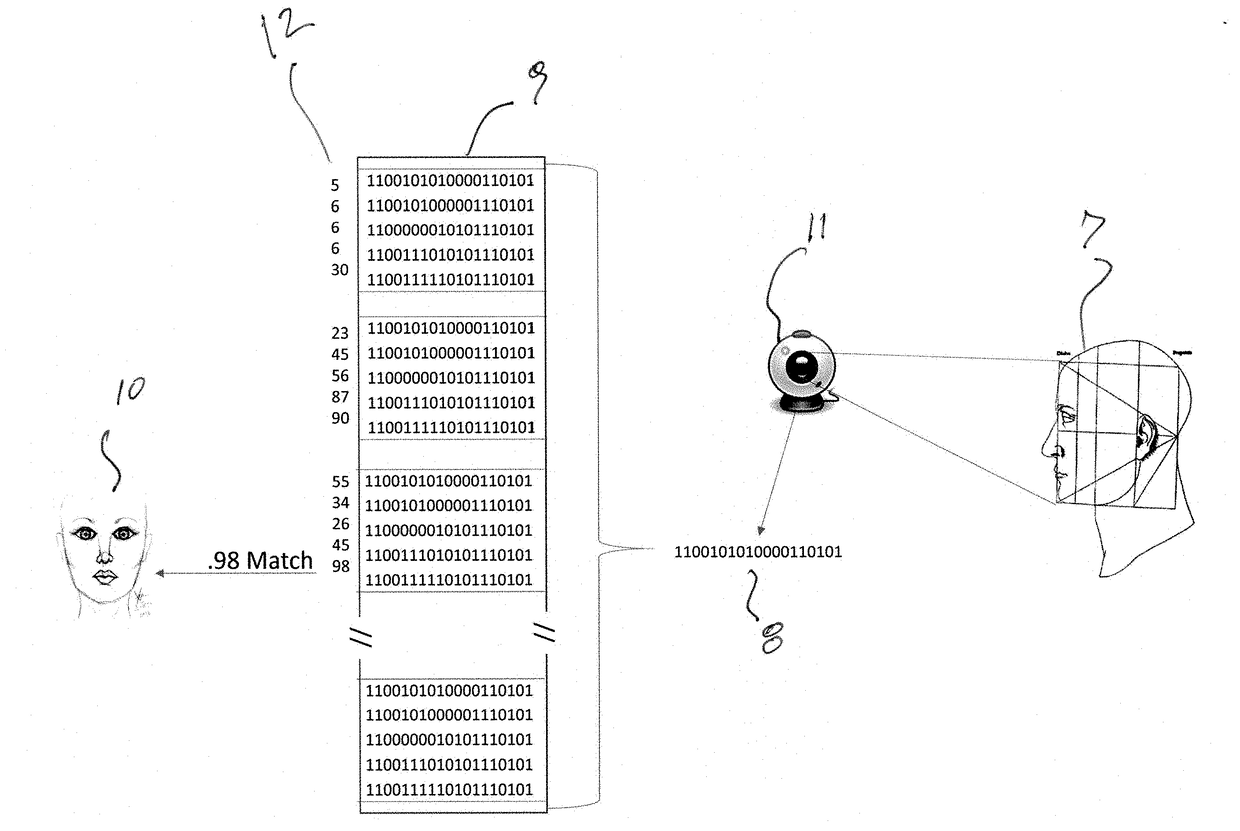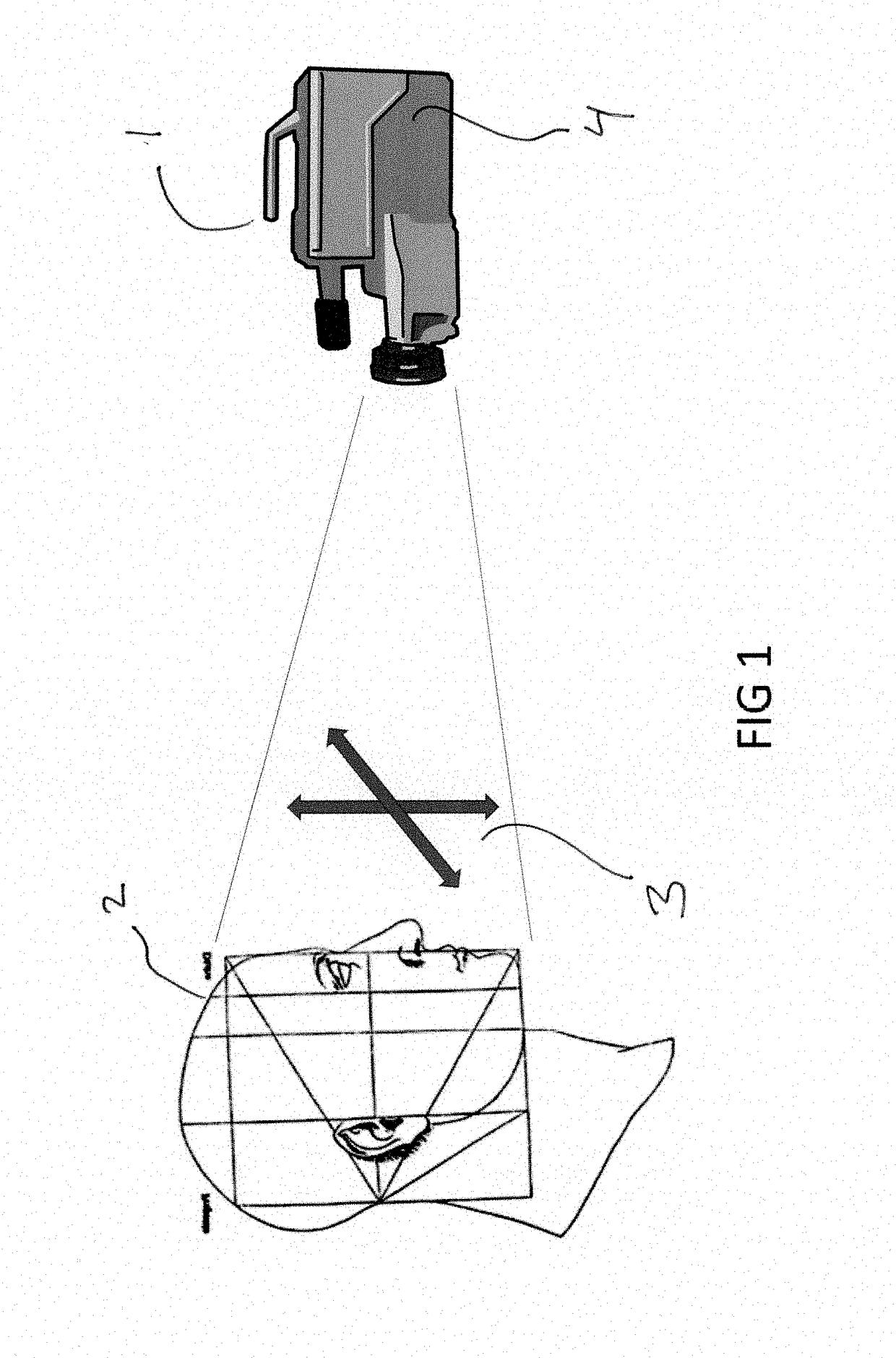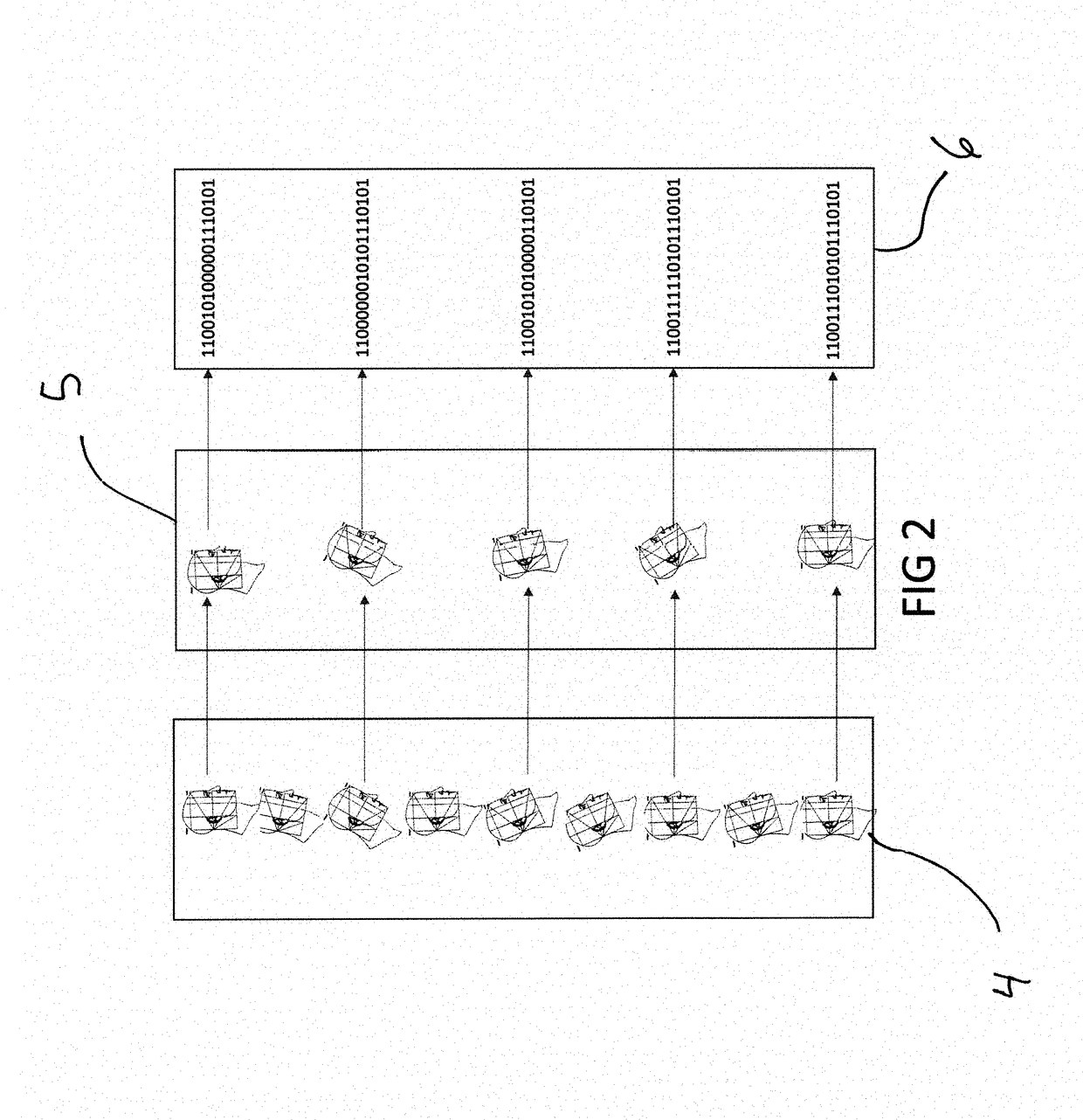Method and system for increasing biometric acceptance rates and reducing false accept rates and false rates
a biometric and acceptance rate technology, applied in the field of computerized biometric matching, can solve the problems of increasing the probability of creating a match, increasing so as to achieve a high matching threshold score and reduce the probability of false acceptance significantly
- Summary
- Abstract
- Description
- Claims
- Application Information
AI Technical Summary
Benefits of technology
Problems solved by technology
Method used
Image
Examples
Embodiment Construction
[0028]Method and System for Increasing Biometric Acceptance Rates and Reducing False Accept Rates and False Reject Rates begins with building a database of desired people to be matched. This could be enrolling people for access into a facility or photographing bad people to be used in a watchlist. Images can be obtained with the person present or from unconstrained video images taken from other sources such as security video cameras, media, or other video collection devices.
[0029]The next step is to determine what frames should be extracted from the collected video stream. This can be done geometrically by taking every second, third, fourth or n frame or it could be done electronically by selecting degree-of-change in the biometric presented.
[0030]FIG. 1 depicts the enrollment of a person 2 with a video capture device 1. The person motions the biometric in different directions 3 and the video stream 4 is captured in the video collection device 1. FIG. 2 depicts the video capture str...
PUM
 Login to View More
Login to View More Abstract
Description
Claims
Application Information
 Login to View More
Login to View More - R&D
- Intellectual Property
- Life Sciences
- Materials
- Tech Scout
- Unparalleled Data Quality
- Higher Quality Content
- 60% Fewer Hallucinations
Browse by: Latest US Patents, China's latest patents, Technical Efficacy Thesaurus, Application Domain, Technology Topic, Popular Technical Reports.
© 2025 PatSnap. All rights reserved.Legal|Privacy policy|Modern Slavery Act Transparency Statement|Sitemap|About US| Contact US: help@patsnap.com



